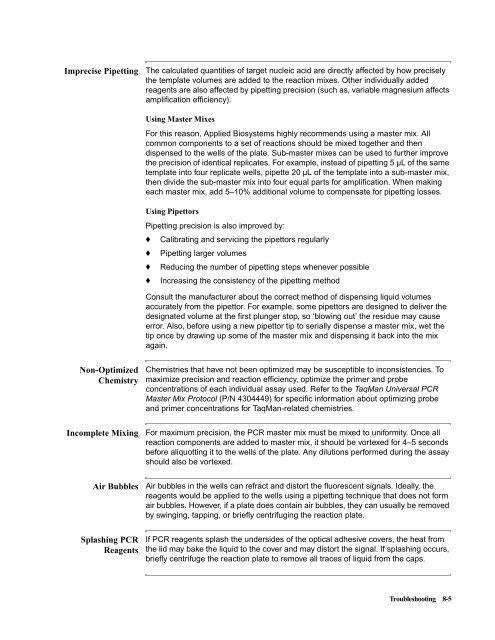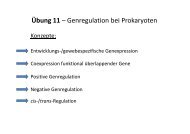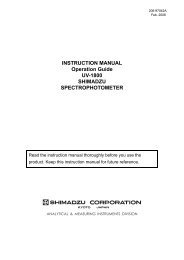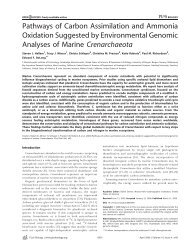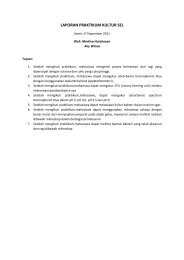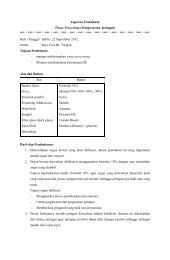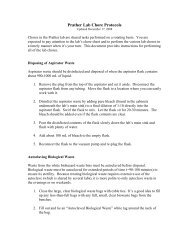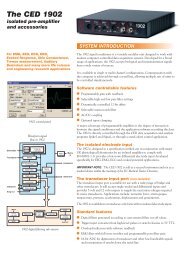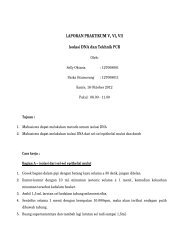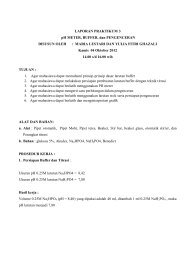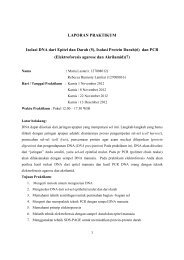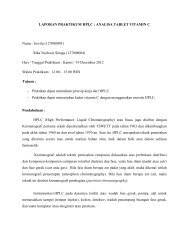ABI Prism® 7900HT Sequence Detection System ... - OpenWetWare
ABI Prism® 7900HT Sequence Detection System ... - OpenWetWare
ABI Prism® 7900HT Sequence Detection System ... - OpenWetWare
Create successful ePaper yourself
Turn your PDF publications into a flip-book with our unique Google optimized e-Paper software.
Imprecise Pipetting The calculated quantities of target nucleic acid are directly affected by how precisely<br />
the template volumes are added to the reaction mixes. Other individually added<br />
reagents are also affected by pipetting precision (such as, variable magnesium affects<br />
amplification efficiency).<br />
Non-Optimized<br />
Chemistry<br />
Using Master Mixes<br />
For this reason, Applied Biosystems highly recommends using a master mix. All<br />
common components to a set of reactions should be mixed together and then<br />
dispensed to the wells of the plate. Sub-master mixes can be used to further improve<br />
the precision of identical replicates. For example, instead of pipetting 5 µL of the same<br />
template into four replicate wells, pipette 20 µL of the template into a sub-master mix,<br />
then divide the sub-master mix into four equal parts for amplification. When making<br />
each master mix, add 5–10% additional volume to compensate for pipetting losses.<br />
Using Pipettors<br />
Pipetting precision is also improved by:<br />
♦ Calibrating and servicing the pipettors regularly<br />
♦ Pipetting larger volumes<br />
♦ Reducing the number of pipetting steps whenever possible<br />
♦ Increasing the consistency of the pipetting method<br />
Consult the manufacturer about the correct method of dispensing liquid volumes<br />
accurately from the pipettor. For example, some pipettors are designed to deliver the<br />
designated volume at the first plunger stop, so ‘blowing out’ the residue may cause<br />
error. Also, before using a new pipettor tip to serially dispense a master mix, wet the<br />
tip once by drawing up some of the master mix and dispensing it back into the mix<br />
again.<br />
Chemistries that have not been optimized may be susceptible to inconsistencies. To<br />
maximize precision and reaction efficiency, optimize the primer and probe<br />
concentrations of each individual assay used. Refer to the TaqMan Universal PCR<br />
Master Mix Protocol (P/N 4304449) for specific information about optimizing probe<br />
and primer concentrations for TaqMan-related chemistries.<br />
Incomplete Mixing For maximum precision, the PCR master mix must be mixed to uniformity. Once all<br />
reaction components are added to master mix, it should be vortexed for 4–5 seconds<br />
before aliquotting it to the wells of the plate. Any dilutions performed during the assay<br />
shouldalsobevortexed.<br />
Air Bubbles Air bubbles in the wells can refract and distort the fluorescent signals. Ideally, the<br />
reagents would be applied to the wells using a pipetting technique that does not form<br />
air bubbles. However, if a plate does contain air bubbles, they can usually be removed<br />
by swinging, tapping, or briefly centrifuging the reaction plate.<br />
Splashing PCR<br />
Reagents<br />
If PCR reagents splash the undersides of the optical adhesive covers, the heat from<br />
the lid may bake the liquid to the cover and may distort the signal. If splashing occurs,<br />
briefly centrifuge the reaction plate to remove all traces of liquid from the caps.<br />
Troubleshooting 8-5


